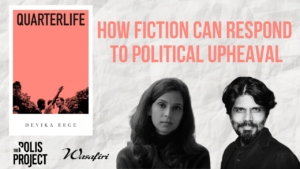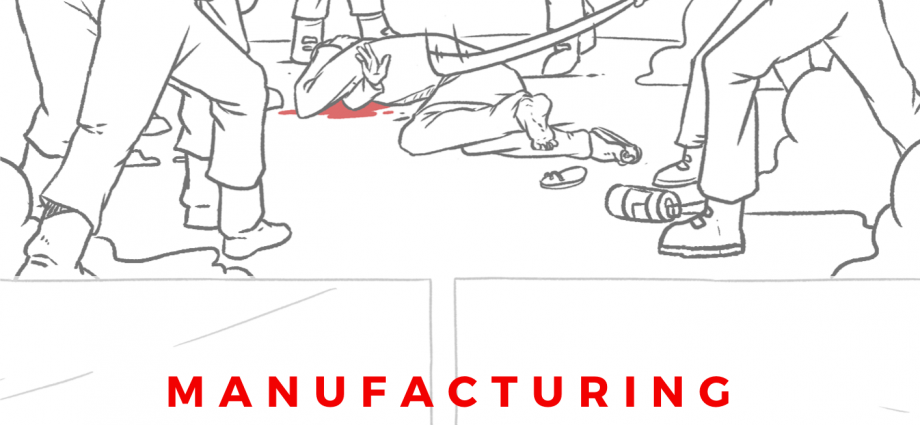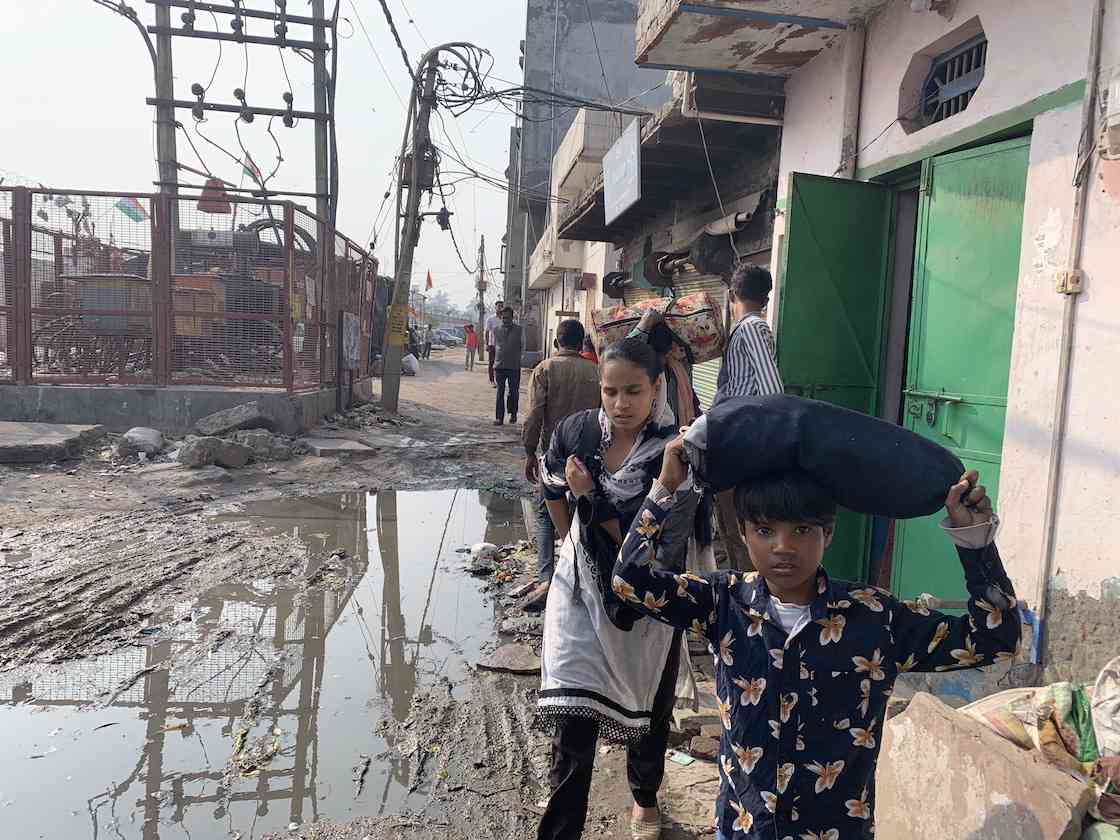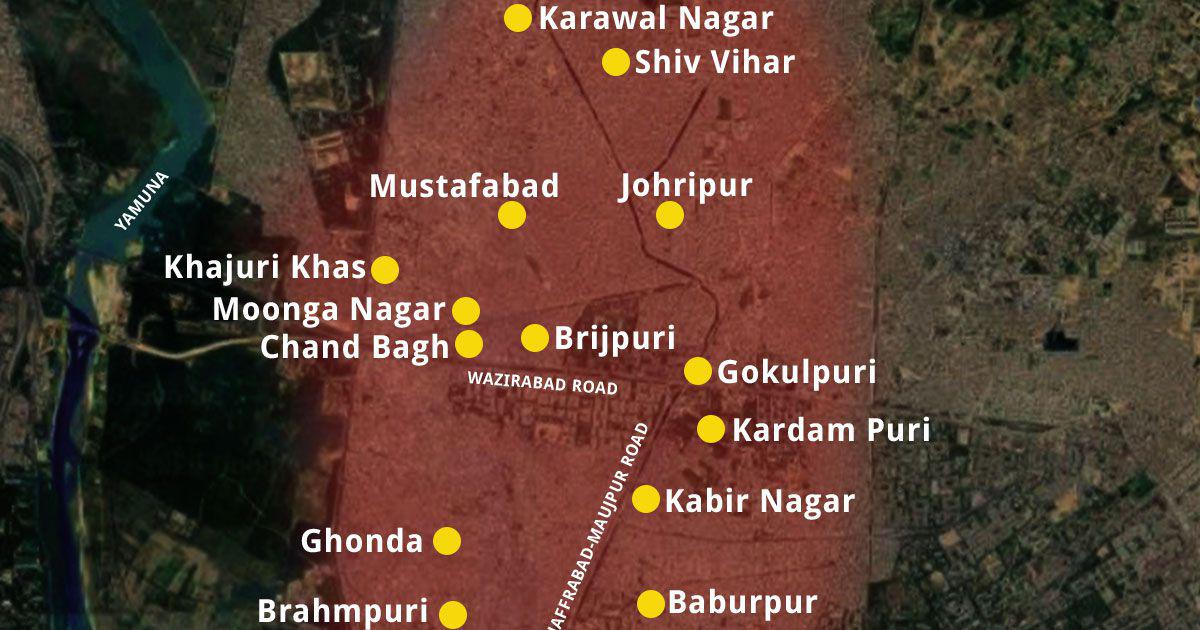
Manufacturing Evidence: How the Police is framing and arresting constitutional rights defenders in India

On the afternoon of 23 February 2020, communal violence broke out in Gokulpuri, a neighborhood in North-East Delhi. From there, it quickly spread to several other areas — including Seelapur, Shivpuri, and Jafrabad — raging on for four days before the situation was finally brought under control. In all, 53 people were murdered, a majority of them Muslim. Hundreds of families, mostly Muslim, were also displaced from their homes and are yet to return as it is still too dangerous. The attacks coincided with Donald Trump’s diplomatic visit to New Delhi on 24 February. This coincidence is one reason why the violence received widespread international media coverage. While large sections of the Indian domestic media have framed the violence as a “communal riot,” it is fairer to describe the events as a state-abetted pogrom against the Muslim community, that was not adequately protected — and, in some cases, was actively attacked — by the Delhi Police.

Since around 11 am on 24 February, the Wazirabad road in Delhi had become a site of violence between a Muslim group protesting the Citizenship (Amendment) Act, and a Hindu mob that stood alongside the policemen. SHIVAM KHANNA as reported on Caravan.
Read the entire report: 
On the afternoon of 23 February 2020, communal violence broke out in Gokulpuri, a neighborhood in North-East Delhi. From there, it quickly spread to several other areas — including Seelapur, Shivpuri, and Jafrabad — raging on for four days before the situation was finally brought under control. In all, 53 people were murdered, a majority of them Muslim. Hundreds of families, mostly Muslim, were also displaced from their homes and are yet to return as it is still too dangerous. The attacks coincided with Donald Trump’s diplomatic visit to New Delhi on 24 February. This coincidence is one reason why the violence received widespread international media coverage. While large sections of the Indian domestic media have framed the violence as a “communal riot,” it is fairer to describe the events as a state-abetted pogrom against the Muslim community, that was not adequately protected — and, in some cases, was actively attacked — by the Delhi Police.
Police complicity in anti-Muslim violence is an old story in India. Since Independence, countless enquiry commissions have indicted the Police for their partisan handling of sectarian conflict. Time and again the Police have ignored mounting communal tensions, turned a blind eye to the gathering of arms by Hindu nationalist groups, and — once violence is unleashed — abandoned Muslims to their fate. This cycle of violence and impunity is one major reason Hindu terror has not been stamped out in India. Yeh andar ki baat hai / police hamaare saath hai, (It’s an internal secret/ the Police are with us) as Hindu mobs chanted during the 2002 Gujarat pogrom.
Also read: The high cost of targeted violence in Northeast Delhi: A list of the deceased
An international coalition of human rights defenders, with evidence gathered by activists on the ground, compiled Manufacturing Evidence: How the Police is framing and arresting constitutional rights defenders in India – a report that once again exposes the communal bias of the Indian Police. Indeed, the account it provides of the Delhi Police’s (mis)conduct during the four days of violence makes for sordid reading. When Muslims under threat made distress calls to the Police — over 13,000 were registered in total — they largely went unanswered. When the Police did show up at attack sites, they hardly tried to prevent violence and in many instances just idly watched as Muslims were attacked. There is also ample evidence that some police officers actively engaged in violence against Muslims, essentially throwing in their lot with the Hindutva mob. In one instance, the Police even prevented injured Muslims from accessing medical treatment. On the night of 25 February, close to thirty Muslims fleeing mob violence sought refuge in Mustafabd’s Al Hind hospital, which soon exceeded its capacity to offer treatment to injured patients. As mobs were circling outside, a police escort was required to ensure that departing ambulances safely made it to larger health facilities. However, the Police refused to send in officers. They essentially abandoned the hospital — which, in desperation, took to social media for help — until ordered to intervene by Justice Murlidhar, who convened a dramatic midnight hearing.
So much for the Delhi police’s response to the actual violence. What of the inquiry and arrests that have followed? In the months since the February attacks, the Delhi Police have displayed little inclination to pursue and persecute those responsible for organizing and carrying out this horrific mass murder. Media reports have made it clear that the Police have been negligent in investigating and filing complaints made by Muslim survivors, and barely questioned BJP leader Kapil Mishra, who on 23 February issued an public announcement declaring that his supporters would be “forced to hit the streets” if the Police did not clear a protest against the discriminatory Constitutional Amendment Act (CAA).
Yet this cover-up of the crimes of Hindutva rioters is only one part of the story. More pernicious is how the Delhi Police has set about harassing the Muslim community soon after the attacks. Since February, the Police has taken to targeting vulnerable Muslim youth, who are being subjected to lengthy and arbitrary interrogations regarding their alleged role in the violence. As a tactic of state terror, this is straightforward enough. But, in a shocking twist, it has since emerged that the youth are also being coerced into accusing civil rights activists, particularly those connected to the anti-CAA protests, of instigating the February attacks.
The Police’s attempt to implicate anti-CAA activists, who have no relation whatsoever to the attacks — other than the fact that many of them tried to prevent the violence — adds a new political dimension to the situation. It reveals that the Bharatiya Janata Party (BJP) has developed a new punitive tactic whereby a vulnerable community (in this case, Muslim youth) can be harassed into providing false testimony against those deemed enemies of the State (in this case, civil rights activists).
The threat that this tactic poses to the future of civil rights in India is grave. Though Indian law expressly prohibits the admission of custodial confessions into evidence to prevent coercion, it is naive to think the BJP will abide by the regulation. Rather, it is foreseeable that the government will use every possible means of coercion to elicit “evidence” linking civil rights activists to serious crimes. This is why it is imperative to understand how and why the Delhi Police have gone about interrogating “suspects” in the wake of the Delhi attacks.

The report Manufacturing evidence, in the first place establishes that Delhi Police has systematically failed to help Muslim survivors of the attacks in their pursuit of justice. On the contrary, the Police have created a hostile environment for Muslim litigants: failing to register First Information Reports (FIRs), withholding public information about the filed FIRs, and also intimidating litigants — especially those accusing the Police of crimes. In every way, the Muslim community has been gaslighted by the Police.
At the same time, the Police have also embarked on an ambitious program to shift the blame for the attacks onto the Muslim community itself, attempting to transform Muslims from victims to perpetrators. This too has happened in India many times before. For instance, the 1970 Madon Commission, set up to investigate anti-Muslim violence that broke out in Bhiwandi, Maharashtra, noted that the special police unit investigating the case partnered with local Hindu groups to concoct charges against members of the Muslim community.
In the aftermaths of the North-East Delhi violence, the Police have gone further and used the attacks as an excuse to establish a veritable reign of terror in Muslim neighborhoods. From March 2020 onwards, the Police have repeatedly and arbitrarily targeted young Muslim men, summoning them to the police station and interrogating them about their role in the attacks, often using the most coercive methods. These interrogations go on for long hours and make a mockery of Coronavirus social distancing; they happen “on odd days, at odd times, when we are meant to try to keep safe from Coronavirus,” as one human rights defender who contributed to the report remarked.
Muslims are not the only demographic being targeted by the police investigation. In a shocking turn of events, the Delhi Police have also attempted to link several student activists and prominent civil rights activists to the attacks. Specifically, they have picked out those activists involved with the peaceful protests against the Constitutional Amendment Act (CAA) and the National Register of Citizens (NRC) that unfolded across India between December 2019 and February 2020. Untangling this connection, and the conspiratorial thinking behind it is the central theme of the report.
Why would the Police want to connect civil rights activists with the anti-Muslim attacks? To understand what’s at stake here, it is useful to consider the “Bhima-Koregaon conspiracy,” perhaps the closest historical antecedent for what the Police are now attempting in Delhi. On 1 January 2018, a caste-Hindu mob attacked a Dalit procession in the town of Bhima-Koregoan in Maharashtra. As it has subsequently been uncovered, the attack was orchestrated by two well-known local leaders who profess a right-wing Hindutva ideology, Sambhaji Bhide and Milind Ekbote. But instead of pursuing either of them, the BJP government set about arresting several leading civil rights activists — including Anand Teltumbde, Gautam Navlakha, and Sudha Bharadwaj — most of whom were not at the event, and all of whom were instead vocal critics of right-wing Hindu extremism. They were all incriminated on the pretext that they were part of a larger conspiracy, orchestrated by the banned Communist Party of India (Maoist-Leninist), to assassinate Prime Minister Narendra Modi.
These accusations are at best illogical. Even if the aforementioned activists wanted to murder the Prime Minister, there is no reason why they would first want to incite violence against Dalits. On the contrary, several of them — Professor Teltumbde most prominently — have dedicated their energies to fighting for the rights of Dalits. This case was never about providing evidence: the Bhima-Koregaon attacks offered the Police the pretext to misuse their investigative powers. While pretending to inquire into the attacks, they have been able to surveil, harass, and even plant false evidence on activists who have been critical of the Hindu-nationalist ruling regime, with the end goal of arresting them. At the same time, these dramatized fake investigations have allowed the ruling dispensation — with the mainstream media serving as loyal amplifiers — to build a grand conspiratorial narrative to besmirch the name of upstanding civil rights activism, and moreover to cast dissent itself in a bad light. In the process, they have also sent a message to Dalits, making it clear that they will not be protected. In sum, the legal process, the constitutional right to dissent, and the dignity of minorities were all attacked through one consecrated program. For the BJP, it was nothing less than a perfect storm.
Also Read: Violence after violence: The politics of narratives over the Delhi pogrom
Something eerily similar is now happening in Delhi. The Delhi Police has decided, on the basis of no credible evidence, that the February attacks were orchestrated by a “conspiracy” of student activists and civil rights activists, who had been actively involved with the protests against CAA and NRC. These protests profoundly challenged the legitimacy of the ruling dispensation in that millions and millions of Indians — of all religions, castes, and creeds — took to the streets to reject the BJP’s Hindu nationalist ideology and to reclaim the values of tolerance and secularism enshrined in the Indian Constitution. From the BJP’s perspective, it was imperative that something be done to discredit the protest movement, and if possible intimidate protestors in a manner that they never take to streets again.

The Delhi attacks have offered the Police a way to do this. Just as they once argued that a handful of activists were conspiring to assassinate the Prime Minister, they have now decided that several students and activists, with a vested interest in seeing the CAA and NRC laws overturned, have long been spreading misinformation in Delhi’s Muslim communities, thereby instigating the local youth to protest. That Muslims would want to consciously oppose laws that vilify and disenfranchise their community, seems not to have occurred to the Police. According to this theory, the conspiracy culminated on 23 February 2020, when anti-CAA protestors set up a roadblock on the Seelampur-Jafrabad-Maujpur road with the intention of setting off pre-planned riots. The Police claim that the violence was meant to coincide with President Trump’s diplomatic visit, in order to defame India in the eyes of the international media. In essence, they are framing the entire anti-CAA protests – and the violence that it supposedly culminated in – as a grand charade to besmirch India’s good name.
Having drawn up this conspiracy narrative, the Police have done everything in their power to bring it into existence. In the first place, they have filed chargesheets claiming that anti-CAA protestors were the planners and instigators of the February violence. As in the Bhima-Koregaon case, this is not presented as an accusation to be justified with evidence, but as an a priori truth based upon which all subsequent investigations will occur. In one of the charge sheets, referred to in the report, the Police flatly claim that “The riots were part of a well-designed conspiracy crafted during CAA/NRC protests.” As the Police have not furnished much details about the “design” of the conspiracy, it is impossible not to conclude that this is simply the expression of a vendetta.
Some judges, like Justice Bakhru, have courageously rejected the Police’s allegation, while others have accepted it. In any case, from the Police’s perspective, the point is not to prove anything but rather to weaponize the legal process itself. That is, the Police know that it can continually accuse and re-accuse, summon and detain, surveil and interrogate an activist until a judge sympathetic to the regime is finally assigned the case. This is precisely what happened to Natasha Narwal and Devangana Kalita, two members of the women’s collective Pinjra Tod. Initially, on 25 May 2020, they were arrested by the Delhi Police for participating in an anti-CAA roadblock, but Deputy Magistrate Ajeet Narayan granted them bail the very next day making it clear that protesting was not a crime. However, the Police then went on to file three subsequent FIRs and, on 5 June, the Delhi Police Crime Branch Special Investigation Team finally rearrested the activists under the draconian, un-bailable Unlawful Activities Prevention Act (UAPA) — once again for their participation in the anti-CAA protests, though this time the charge was amended to connect their roadblock with the communal attacks. (At the time of writing, they are still in Police custody).

Since March, the Police have arrested several members of student and women’s rights groups using these underhanded tactics. It would now appear that they have trained their sights on more veteran activists like the Jawaharlal Nehru University (JNU) professor Apoorvanand and human rights lawyer Hash Mander. Perniciously, they are using Muslim youth as pawns to fulfill their political agenda. During interrogations, Muslim youth are being pressurized to “testify” against senior activists, through all manners of threats and promises. While the names of specific senior activists targeted have been withheld from the report to protect their identity, the essence of the Police’s tactics can be grasped by surveying some snippets of the interrogation transcripts.
“Hum tumko bacha lenge bus tum humari madad karo,” (We will save you if you help us) one policeman suggested to a “suspect” he was interrogating. Another officer attempted to get a suspect to falsely admit that he was at a particular location at a particular time: “Tu tha vahan, aur tujhe pata hai. Tujhe pechanna padega” (You were there, and you know. You will have to identify them). The Muslim youth in this case is being used as a kind of false-witness. It is very easy for the Police to ascertain where a given activist was at a given date and time. All they have to do after that is threaten someone to admit to also being at the same location, and then further threaten to admit to witnessing said activist committing some kind of crime. Just as the Police planted evidence to implicate activists in the Bhima-Koregaon conspiracy, here they are planting witnesses. Needless to say, the Indian Criminal Law prohibits the Police from threatening or compelling anyone to admit to an offence (Section 24, Indian Evidence Act and Section 163, Code of Criminal Procedure). Yet, as noted before, it would be naive to expect the BJP to respect the law.
*

Obscured by all this chicanery is the culpability of Hindu nationalists, particularly BJP political leaders, in the anti-Muslim violence. As with the Bhima-Koregaon, the real criminals have gone scot-free, as the State obsessively pursued imagined enemies. The most glaring omission in this regard is the BJP politician Kapil Mishra, whose name features nowhere in the police chargesheet, even as he is widely regarded as “provoking” the attacks through his incendiary rhetoric.
On 23 February, Mishra put out a call on social media to his supporters and subsequently led a rally in Maujpur, less than a kilometer away from the site of Jafrabad sit-in community protest against the CAA. Standing beside Ved Prakash Surya, the Deputy Commissioner of Police of North East, Mishra openly called for the forced removal of the protestors at Jafrabad, who he branded as anti-nationals. “Till the time Trump goes back, we are going to go forward peacefully,” he told his assembled supporters. “But after that, we will not listen to the Police if roads are not cleared after three days.” This is an open endorsement to violence that went without consequences. And indeed violence without consequences is what unfolded between 23 and 27 February – another black period in India’s democracy.
The BJP has systematically developed a tactic of lumping together and vilifying several enemies — minority groups, civil rights activists, the legal system— in one go. To give it is due, this is an economical approach that saves the ruling regime both time and resources. Less than two years after the attacks at Bhima-Koregaon, a dozen of India’s most courageous civil rights activists have been spuriously placed in jail; it would seem that the Delhi attacks and anti-CAA protests will reap a similar bumper harvest. If we are to build a resistance capable of battling the BJP’s authoritarianism, we will have to similarly develop tactics aimed at simultaneously upholding the human rights and dignity of minorities, our constitutional right to protest, and the integrity of India’s legal system. A many-sided authoritarianism necessitates a many-sided resistance.
You can read the entire report here:
Manufacturing Evidence





